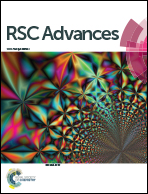Enhanced 1.5 μm emission from Yb3+/Er3+ codoped tungsten tellurite glasses for broadband near-infrared optical fiber amplifiers and tunable fiber lasers
Abstract
Strong 1.5 μm emission with full width at half maximum (FWHM) of 64 nm has been obtained in 3 mol% Yb2O3 and 1 mol% Er2O3 codoped tungsten tellurite glass under the excitation of a 980 nm laser diode. Spectroscopic properties of Yb3+/Er3+ codoped tungsten tellurite glasses as a function of Yb3+ and Er3+ contents are systematically investigated by absorption spectra, emission spectra and lifetime measurement. The structure of tungsten tellurite glass is characterized by Raman spectrum. In addition, emission cross section and gain coefficient of Er3+ ions near 1.5 μm are determined and respective maximum values attain 1.06 × 10−20 cm2 and 4.07 cm−1. Moreover, gain bandwidth and figure of merit associated with gain properties in tungsten tellurite glass are calculated and compared with other reported glasses. These results indicate that Yb3+/Er3+ codoped tungsten tellurite glasses with better gain properties are promising candidates in constructing broadband optical fiber amplifiers and tunable fiber lasers in the optical telecommunication window.



 Please wait while we load your content...
Please wait while we load your content...